У Лукоморья – By the Bay – is the prologue to the epic poem Ruslan and Lyudmila by the world-famous poet/heartthrob Alexander Pushkin; it features cameos by almost all of the heroes of Russian folk lore. In this magic place, under that huge, old and beautiful oak, with the wise cat’s songs and tales, images from different fairy tales interweave: a wood sprite wondering around, a mermaid sitting on the oak’s branch, a warlock being defeated by the hero, Koschei the Deathless obsessing over his gold, Baba Yaga and her hut on chicken legs, sea knights coming from the sea, an imprisoned princess and her loyal wolf. The Russian soul and spirit in that magical place, among those fantastic creatures, is so thick, you could cut it with a knife.
At the end of the prologue, the narrator, Pushkin, describes how he was there, sat under the oak, and the wise story-telling cat told him his stores. The narrator remembers one of the cat’s stories in particular, namely the one that follows. Thus begins the epic poem Ruslan and Lyudmila.
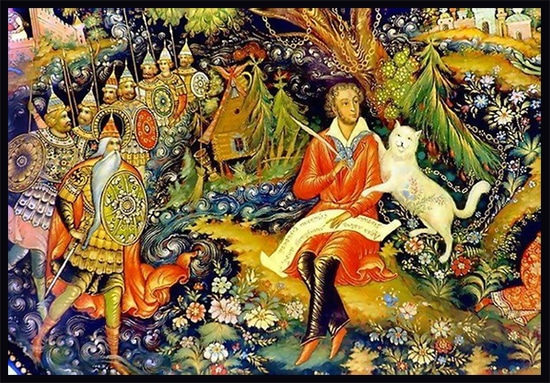
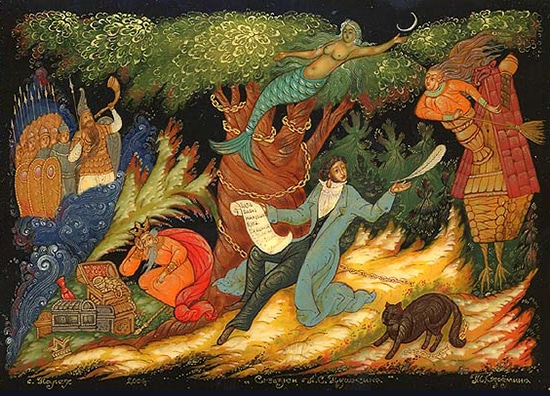
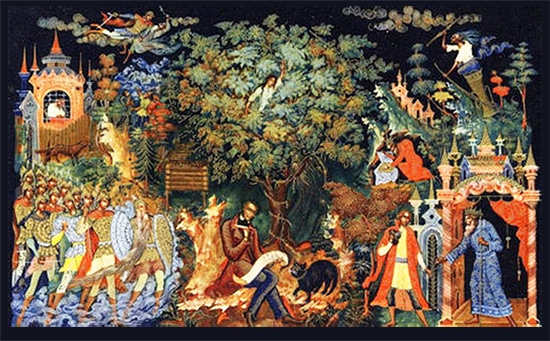
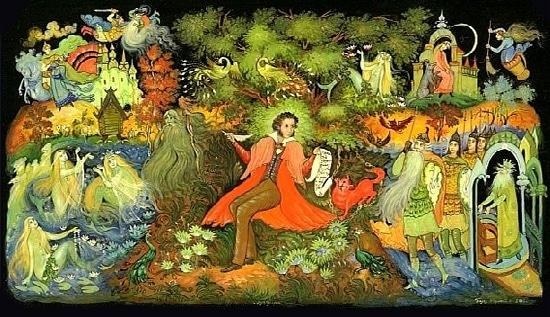
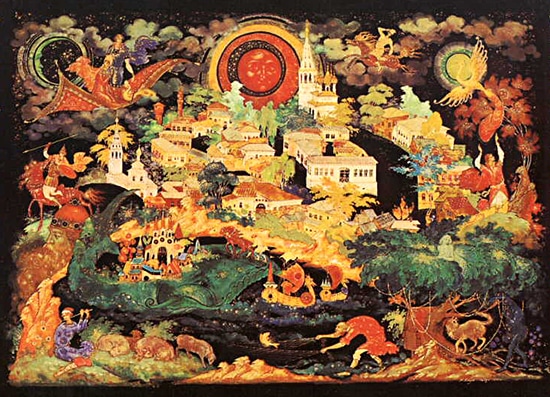
LUKOMORYE – does this place exist?
Lukomorye (Russian: Лукоморье) is a semi-fictional land in Russian folklore and history. The word is the derivation of two parts: bow (luk) and sea (morya), meaning curved sea-shore. The Russian word itself is an obsolete term for “bight” or “bay”.
The land “Lucomorye” was described and depicted, with different degrees of accuracy, in a number of antique maps; it is also mentioned in the Russian chronicles and The Tale of Igor’s Campaign, an anonymous epic poem which dates to the late 12th century.

RUSLAN AND LYUDMILA, the poem
This epic fairy tale opens with the abduction of the daughter of Prince Vladimir of Kiev, Lyudmila, on her wedding night by the evil white-bearded dwarf-wizard Chernomor, whose uncanny physical strenght is stored in his long, white beard. Her hubby, Ruslan, sets off on a quest to rescue her. Like any epic tale, he has to get through a bunch of stumbling blocks: the machinations of the evil sorceress Naina, battling villains and witches, fighting off his bride’s other suitor, before finally defeating Chernomor. The story nearly comes to a tragic end, but of course good and love triumph.
Some of the events and names in the poem have a historical basis. The story takes place during the time Kiev was the capital of the East Slavic state Rus’, soon after its founding. Vladimir the Great (Vladimir of Kiev) ruled this state from 980 to 1015. The ruler, an actual figure from history, is best known for bringing Christianity to Kievan Rus’, the territory that would eventually expand into the Russian Empire. He became a hero in many legends and tales, though in this one he appears only as he father of Lyudmila.
The name Ruslan is adapted from Yeruslan Lazarevich, the famous young and beautiful Russian folk literature hero who had many military and amorous adventures
The poem was written in 1820.
RUSLAN AND LYUDMILA, the opera

The great Russian composer Mikhail Glinka was so inspired by Ruslan and Lyudmila that he composed an opera based on it. He worked on it between 1837 and 1842.
The text of the opera mostly does not follow the text of the poem. Instead of the playful and youthful mood of Pushkin’s poem, taken as the basis for the libretto, Glinka focused on majestic images of ancient Russia, and with emotionally rich lyrics he created a work of heroic proportions.


